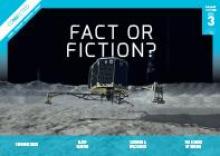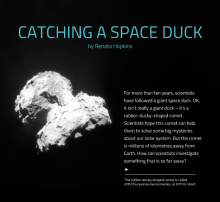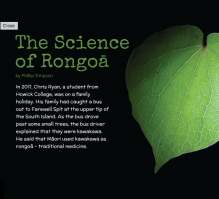Connected 2015 level 3 - Fact or Fiction?

The focus in this issue of Connected is on the Nature of Science strand of the curriculum and the science capability: Critique evidence.
At times, Connected themes require the introduction of concepts that students at this curriculum level may not be able to fully understand. What matters at this stage is that students begin to develop understandings that they can grow over time.
Look inside this issue

Pseudoscience

by Sophie Fern
illustrated by Claire Tobin
Pseudoscience is something that sounds scientific but isn’t actually based on solid evidence. Advertisments often use pseudoscience, which can be misleading. To be able to tell the difference between real science and pseudoscience, we need to think like scientists. We can use our knowledge of what makes an investigation scientific to ask whether the information is trustworthy.
Series: Connected 2015 level 3 - Fact or Fiction?
Learning area: English, Mathematics and Statistics, Science
Curriculum level: 3
Category: Non-fiction
Strand: Nature of science
Capability: Critique evidence
In: Connected 2015 level 3 - Fact or Fiction?
Publication date: January 2015

Sleep Sleuths

by Kate Potter
illustrated by Toby Morris
How much sleep should we be getting? How many people get enough sleep every night? Jeremy and Marama carry out an investigation to find out how much sleep their classmates are getting. They discover that sometimes, a good investigation can raise more questions than it answers!
Series: Connected 2015 level 3 - Fact or Fiction?
Learning area: English, Mathematics and Statistics, Science
Curriculum level: 3
Category: Non-fiction
Strand: Nature of science
Capability: Critique evidence
In: Connected 2015 level 3 - Fact or Fiction?
Publication date: January 2015

Catching a Space Duck

by Renata Hopkins
In 2004, the European Space Agency sent a spacecraft (called Rosetta) to chase a rubber-ducky-shaped comet called Comet Churyumov-Gerasamenko/67P. In 2014, Rosetta caught up with Comet 67P and sent a lander (called Philae) down to the surface of the comet. Scientists are using the information Rosetta and Philae are sending back to figure out more about comets and other secrets of our solar system.
Series: Connected 2015 level 3 - Fact or Fiction?
Learning area: English, Science
Curriculum level: 3
Category: Non-fiction
Strand: Nature of science
Capability: Critique evidence
In: Connected 2015 level 3 - Fact or Fiction?
Publication date: January 2015

The Science of Rongoā

by Phillip Simpson
Māori use kawakawa as rongoā (traditional medicine). But when scientists tested the kawakawa leaves they said there was no scientific evidence to support the plant’s medicinal properties. Chris Ryan took a closer look at the scientists’ investigations and noticed that they had not used traditional methods to prepare the kawakawa. He wondered if this might have affected their results. So Chris decided to carry out his own investigation.
Series: Connected 2015 level 3 - Fact or Fiction?
Learning area: English, Science
Curriculum level: 3
Category: Non-fiction
Strand: Nature of science
Capability: Critique evidence
In: Connected 2015 level 3 - Fact or Fiction?
Publication date: January 2015


 Literacy Online home
Literacy Online home
